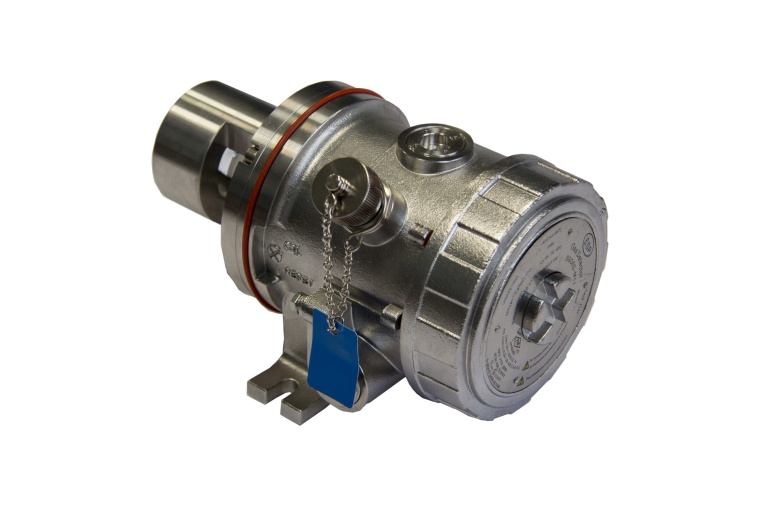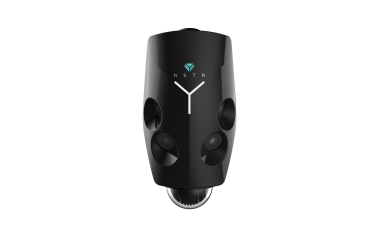Fire Detection 2024
Fire is a bad thing, so the earlier a developing fire can be detected, the better. Early warning can prevent severe damage, environmental pollution, and most importantly save lives. There are various ways of detecting a fire, some of which have been around for decades and others that are emerging as faster, more efficient, or more reliable. Although GIT SECURITY already reported on this subject quite recently, the latest developments deserve a mention here so that you are up-to-date on your options.


The short version of this article could read something like: “AI revolutionizes fire detection.” It is true but insufficient to know what exactly is changing. In fact, it means each fire detector learning about the environment in which it is working, establishing what is a ‘normal’ condition, and what is ‘abnormal’ and worthy of raising an alert. Once this phase has been completed, the chances of a false alarm are very low, and the likelihood of detecting a fire very early is increased.
Taking the use of AI a step further, algorithms can look back on historical data and find patterns and scenarios from previous fire situations that we humans would miss or not even be looking for. They can then process incoming data, looking for flames through their flickering light emission for example or analyzing the RGB content and changes of hue, and compare it to previous situations and events. Convolutional neural networks now enable the analysis of conventional incoming video feeds to recognize smoke and flames. Such AI implementation can provide a ‘predictive’ warning when certain conditions and a combination of situations occur that have previously been followed by a fire, or at least smoke. Such an alert so early on is of course invaluable in protecting people and property because preventive measures can be taken to ensure there is no possibility of a big fire developing.
What to Do?
If it has been established that there really is very likely a fire developing, where should this information be sent? Fire detectors, whatever technology they use, are individual reporting devices that can be viewed simply as Internet of Things elements, so their alert can lead to a number of consequences, and the choice of what happens when an alarm is raised is large. Of course, in all commercial buildings and many private ones too the main fire alarm panel will receive the report and initiate bells, sirens, public announcements, flashing lights etc. Beyond that, integration with HVAC systems and the building’s security systems is very beneficial to ensure effective smoke extraction and that all escape routes are unlocked. Safety and security personnel can be immediately alerted on their current device (PC, tablet, mobile phone, etc.) wherever they are, and external resources activated where necessary.
New Detector Technology
As long ago as 2017, the decomposition of graphene oxide coated optical fiber was found to be a surefire method – sorry for the pun – of detecting a conflagration over long distances. The coating of the fiber is altered when exposed to fire and affects the optical qualities of the fiber within, with the Rayleigh or Raman scattering effect providing the information. The location of a fire along a fiber up to several kilometers long can then be quite accurately determined, which is extremely useful for perimeters close to bushland or routes along pipelines or through tunnels, for example.
An idea has also been published to create fire-detecting wallpaper … yes, you read that correctly … that is based on combining ultralong hydroxyapatite nanowires (HNs) and graphene oxide (GO) thermosensitive sensors. The graphene oxide is normally non-conductive, but rapidly becomes conductive when exposed to temperatures over around 125 °C. The fabrication into a wall covering results in apparently normal wallpaper that can be processed into various shapes, dyed with different colours, and printed with commercial printers. Research is ongoing to improve the temperature sensitivity of graphene oxide-based fire alarms using graphene oxide precursors with thermally labile oxygenated groups – ask a qualified chemist what that all means. Promising experiments are also underway to produce smoke detectors using reduced graphene oxide (rGO) coated on etched fiber Bragg grating (eFBG)-based sensors. Commercially available products using these techniques can be expected within just a year or two.
Multicolor: Ultraviolet and Infrared Flame Detectors
Infrared fire detectors have been around for a long time but have only found limited application so far due to certain disadvantages, such as their susceptability to activation by reflections from non-fire sources. Their big advantage is that they are sensitive to alcohol and hydrogen fires that burn with a different spectra to other substances. Desu Systems will be happy to advise you on some suitable candidates for installation. The advent of AI has led to renewed interest in this method of fire detection because it can now reliably learn to distinguish between ‘real’ and ‘false’ indicators. So expect some new product announcements in this area in the not-so-distant future.
Ultraviolet detectors depend on ‘seeing’ the UV light emitted by a fire. This is not inconsiderable in certain types of fire that emit a significantly different light spectrum. Hydrocarbon-based fuel and gas fires, invisible hydrogen flames, and fires from hydrides, ammonia, silane and other organics are examples of these. If you have such potential sources of fire on your site, then a call to Ornicom, who offer a complete palette of fire and gas detection products, should bring you peace of mind. In North America, Det-Tronics will have the answer to questions of fire/flame/smoke detection.
Combining UV and IR detection builds a sensor that responds fast to flames but has a low false alarm rate, an example of which can be found in the FL500 ultraviolet/infrared flame detector from MSA. The X5200 from Esser Systems does a similar job and can be installed in ‘Ex’ explosive environments both inside and outside. Stateside you can find a range of products intended specifically for the detection of hydrogen flames or other hydrocarbon-based fuels available from ESP Safety.
Real-Time Object Detection: YOLO
Microwave radiometer fire sensing is a technique that is already in widespread use, but is almost exclusively found on satellites, aircraft and drones to scan swathes of land. Analysis of aerial-generated infrared images can quickly locate hotspots, while the multispectral image can identify areas at risk of fire through their species composition, a forest’s density and structure, and the level of fuel such as dead brushwood. While this technique is not applicable to buildings, it can certainly be used to protect large expanses of unpopulated land and Elistar Geometrics can advise you on this.
Flame and smoke detection can nowadays be reliably achieved by using a convolutional neural network that analyses surveillance images. ‘You Only Look Once’ might have been the title of an as yet unreleased James Bond movie, but its abbreviation YOLO is increasingly being seen in relation to real-time object detection algorithms, so future video-based fire detection products may well include this term on their customer-convincing specification sheet.
And so we have come the full circle back to AI-supported fire detection, an area of competence that is enthusiastically being developed to market readiness as you read this article. The parallel-thinking inventors of this world are combining new methods of fire detection with software and intelligent analysis that can only improve the response times to an emerging outbreak of fire. But – and here’s the catch – it all has to be installed properly, correctly adjusted, and regularly maintained to keep the protection level high. So although a certain Mr Musk said that “There will come a point where no job is needed,” AI will in fact spawn a whole new generation of highly-trained engineers to actually make it all work. And that’s a good thing!
Author: David Jayne
Suppliers mentioned:
Desu Systems
Det-Tronics
Elistar Geometrics
ESP Safety
Esser Systems
MSA
Ornicom
Also interesting: Everything you need to know on fire detectors!
most read


Integrated and Futureproof: Traka’s Next Chapter
Interview with Stefni Oliver on Traka’s Vision for the Future

Video security & video management: the winners of category C at the GIT SECURITY AWARD 2026
GIT SECURITY AWARD 2026: Video Security & Video Management - an overview of the most innovative solutions

Is Your Venue Ready for Martyn’s Law?
Martyn’s Law demands stronger security by 2027. Is your venue prepared to protect and respond?

Security management, building security & perimeter protection: the winners of category E at the GIT SECURITY AWARD 2026
GIT SECURITY AWARD 2026: Security management, building security & perimeter protection - an overview of the most innovative solutions






